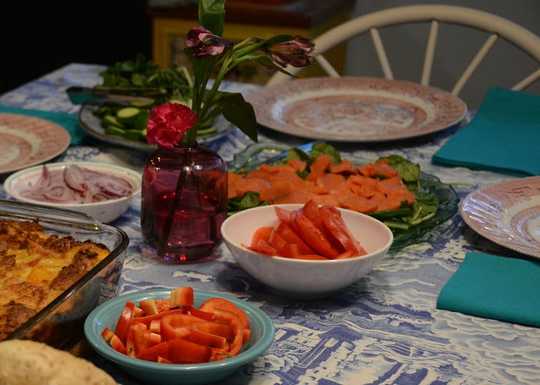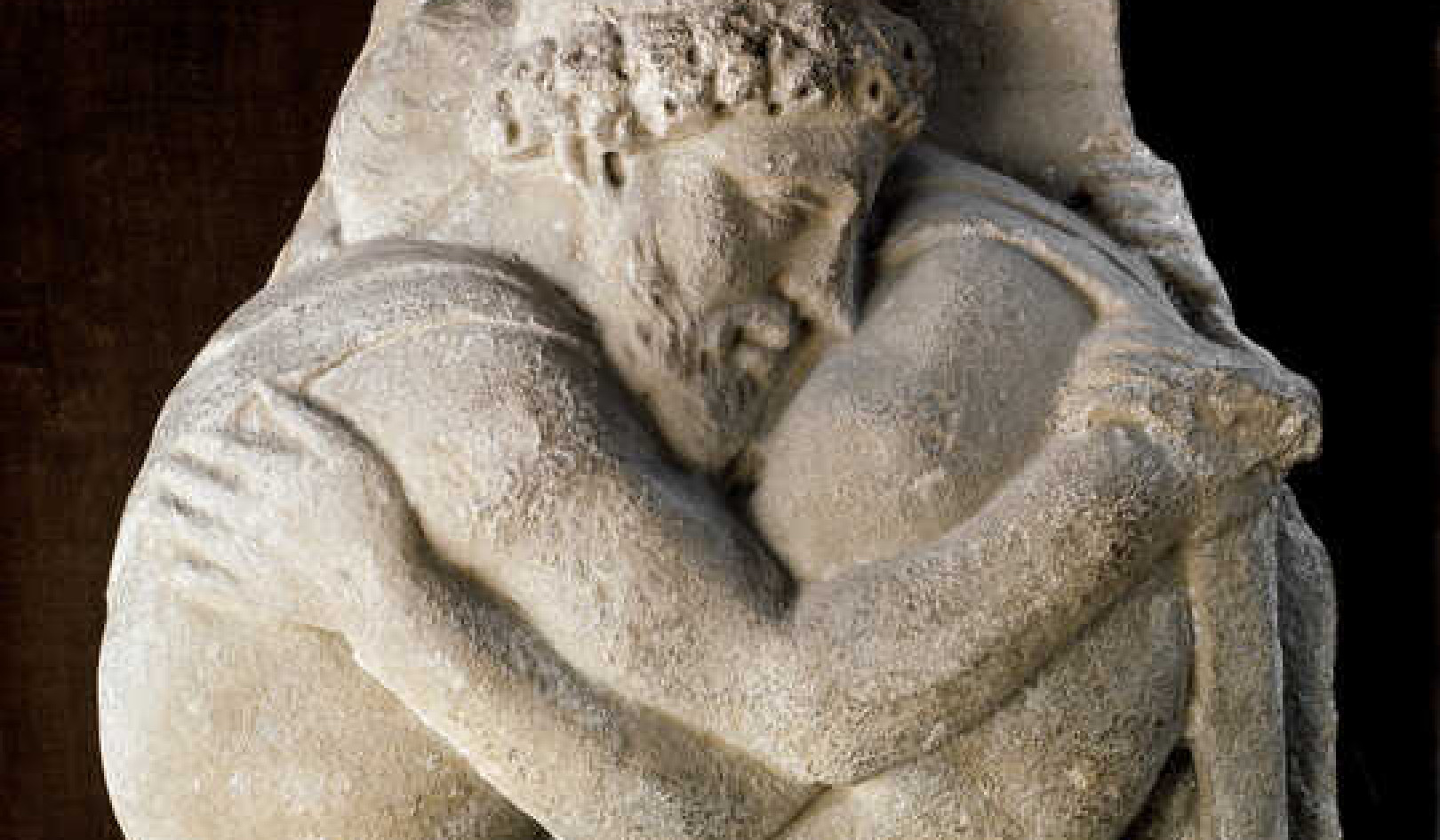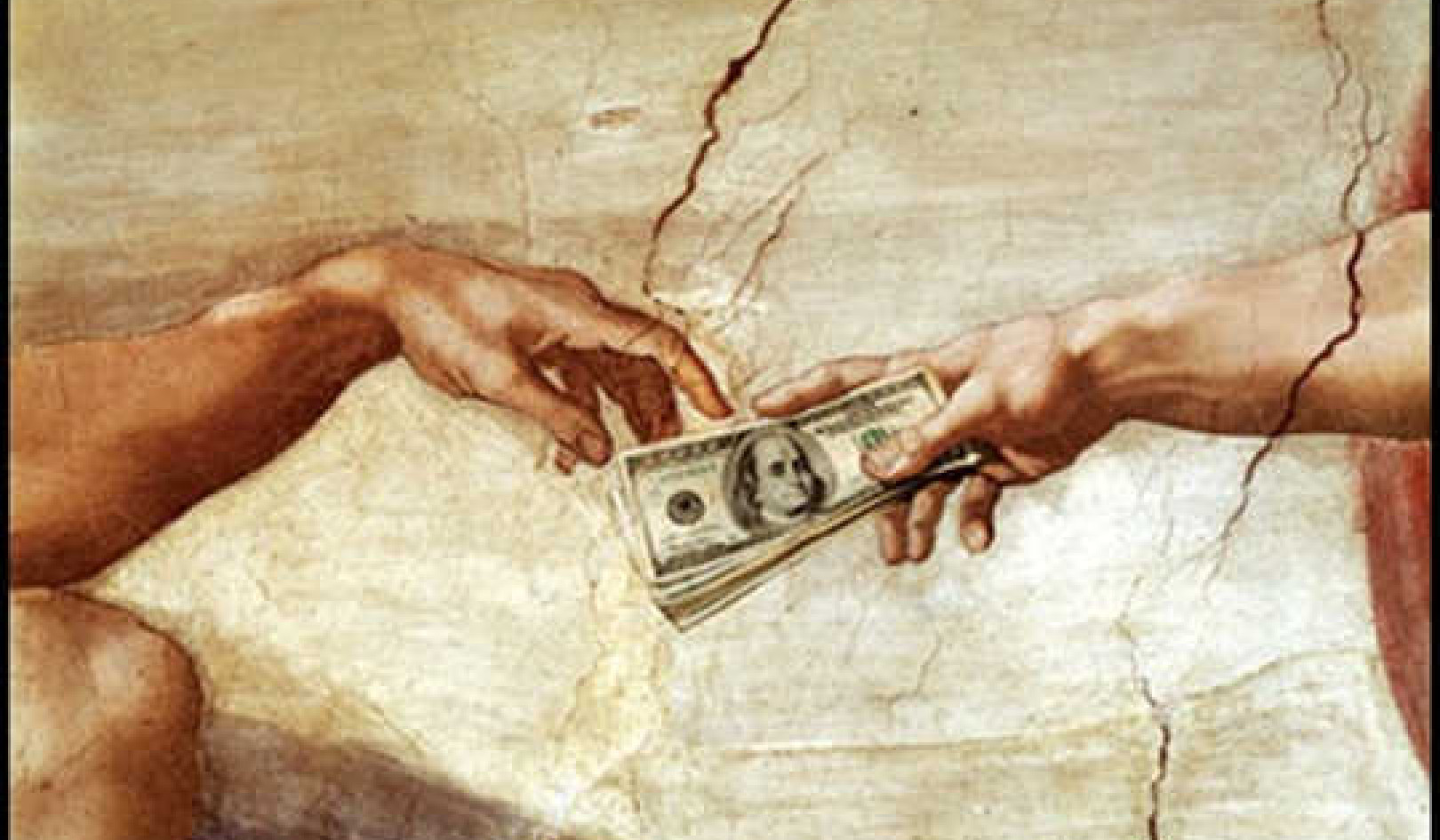
Yom Kippur break fast. danbruell, CC BY-NC-SA
It was the bag of Fritos that gave me away. As a secular Jewish kid whose family did not belong to a synagogue, I did not think twice about riding my bike to the convenience store around the corner during the afternoon of Yom Kippur.
I knew that it was a solemn holiday when observant Jews do not eat or drink. But my public school was closed for the holiday, and there was little to do.
As luck would have it, as I came back around the corner, I nearly ran over a schoolmate who was walking on the sidewalk. I lived in a predominantly Jewish suburb of New York and was conscious that although I wasn’t fasting, he almost certainly was. The bag of corn chips that I was carrying betrayed me as a traitor to my faith.
Years later, as a scholar and author of “Pastrami on Rye: An Overstuffed History of the Jewish Deli,” I came to understand why the Jewish practice of abstaining from food on Yom Kippur is so out of step with the rest of Jewish tradition.
In both its religious and cultural guises, Judaism has always revolved around food.
Eating as a pleasure of life
In ancient times, Jewish priests known as “cohanim” sacrificed bulls, rams and lambs on the altar inside the courtyard of the Temple in Jerusalem, symbolically sharing a banquet with God.
After the Temple in Jerusalem was destroyed in A.D. 70 and Jews were dispersed throughout the Mediterranean basin, food remained a Jewish preoccupation. Because the kosher laws restricted what Jews could put in their mouths, much of every day was spent figuring out what and how to eat.
In 20th-century America, the Jewish delicatessen, with its fatty, garlicky fare, became on par with the synagogue as a communal gathering place.
The worldly emphasis of Judaism has, since ancient times, recognized eating as an essential pleasure of life. A passage in the Jerusalem Talmud states that Jews will be called to account in the afterlife if they have not taken advantage of opportunities to eat well.
Food, according to historian Hasia Diner, “gave meaning to Jewish life.” As the old joke goes, most Jewish holidays can be summed up by a simple formula,
“They tried to kill us. We won. Let’s eat!”
Yom Kippur as a holiday of inversion
But not the Day of Atonement, which is a ritual rehearsal of one’s own death through refusing the demands of the body.

Day of Atonement. Isidor Kaufmann
In Hebrew, Yom Kippur is connected linguistically to Purim, the springtime holiday of masks and merrymaking. But one could well ask: How is the most mournful day of the Jewish year comparable to the most raucous and ribald one?
On Purim, Jews drink alcohol, don disguises and feast on pastries. The element of masquerade, it has been said, makes it the one day of the year when Jews pretend to be other than Jewish.
Not eating on Yom Kippur similarly inverts the normal pattern of Jewish life. It is by abstaining from eating that Jews connect both to God and to their fellow Jews.
A symbol of rebellion?
For secular Jews, there is no better way to rebel against religious Judaism than to dine publicly on Yom Kippur.
In 1888, a group of anarchist Jews in London rented a hall in the city’s East End, where most of the Jews lived, and organized a Yom Kippur Ball with “antireligious lectures, music and refreshments.”
Over the next couple of decades, similar celebrations sprouted up in New York, Philadelphia, Boston, Chicago and Montreal, often triggering protests. Indeed, when Herrick Brothers Restaurant on the Lower East Side of New York decided to remain open on Yom Kippur in 1898, they unwittingly exposed their clientele to violence. Patrons were physically attacked by other Jews on their way to synagogue.
For starving victims of the Nazis, every day was Yom Kippur.
In a famous passage in Holocaust survivor Elie Wiesel’s nonfiction masterpiece, “Night,” the author, who was imprisoned in Auschwitz and Buchenwald, recalls deliberately eating on Yom Kippur as a “symbol of rebellion, of protest against Him,” for His silence and inaction in the face of the Nazi genocide.
“Deep inside me,” he writes, “I felt a great void opening” – not only a physical one, but a spiritual one as well.
A new tradition
Nowadays, most Jews who do not fast on Yom Kippur are simply not part of a community of Jews who participate in synagogue life. Conversely, many non-Jews who are domestic partners of Jews do fast on Yom Kippur.
But whether or not one fasts on Yom Kippur, the tradition has developed over just the last few decades, according to scholar Nora Rubel, of a lavish, festive meal at the conclusion of the fast.
For many Jews, as historian Jenna Weissman Joselit has noted, the break-fast meal is the most important aspect of Yom Kippur, in ways that outshine the religious elements of the day.
Breaking the fast in pop culture
In American popular culture, Jewish characters are often shown breaking the fast – while it is still daylight – with flagrantly non-kosher foods.
In Woody Allen’s 1987 film comedy, “Radio Days,” set in Brooklyn during the Great Depression, a Jewish family is so infuriated that their Communist Jewish next-door neighbor (played by Larry David) is eating and playing music on Yom Kippur that they fantasize about burning down his house. But then the uncle (played by Josh Mostel) goes next door and ends up not only eating pork chops and clams, but being indoctrinated with Marxist ideology to boot.
In a 2015 episode of “Broad City,” Abbi and Ilana down bacon, egg and cheese sandwiches, while in the inaugural episode of the Canadian Internet series “YidLife Crisis,” which debuted in 2014, Yom Kippur finds Chaimie and Leizer in a restaurant consuming poutine – french fries with cheese curds and gravy.
{vembed Y=Yh5uWajtPtA}
Breaking the fast.
The break-fast meal
In real life, the menu for the break-fast meal typically mirrors that of a Sunday brunch: bagels, cream cheese, smoked fish, noodle kugel (casserole), and rugelach (jam-filled pastries).
However, it may also include dishes from the host’s ethnic Jewish origins. Eastern European Jews traditionally dine on kreplach – dumplings stuffed with calves’ brains or chicken livers, Iraqi Jews drink sweetened almond milk flavored with cardamom and Moroccan Jews enjoy harira – lamb, legume and lemon soup – a dish that was borrowed from Muslim neighbors who were breaking the fast of Ramadan.
Whatever is on the menu, Jews eat with a vengeance to conclude the holiday, restoring them to the fullness of not just their stomachs but of their very Jewish identities.![]()
About the Author
Ted Merwin, Part-Time Associate Professor of Religion, Dickinson College
This article is republished from The Conversation under a Creative Commons license. Read the original article.

Related Books:
Prayer Journal for Women: 52 Week Scripture, Devotional & Guided Prayer Journal
by Shannon Roberts and Paige Tate & Co.
This book offers a guided prayer journal for women, with weekly scripture readings, devotional prompts, and prayer prompts.
Click for more info or to order
Get Out of Your Head: Stopping the Spiral of Toxic Thoughts
by Jennie Allen
This book offers insights and strategies for overcoming negative and toxic thoughts, drawing on biblical principles and personal experiences.
Click for more info or to order
The Bible in 52 Weeks: A Yearlong Bible Study for Women
by Dr. Kimberly D. Moore
This book offers a yearlong Bible study program for women, with weekly readings and reflections, study questions, and prayer prompts.
Click for more info or to order
The Ruthless Elimination of Hurry: How to Stay Emotionally Healthy and Spiritually Alive in the Chaos of the Modern World
by John Mark Comer
This book offers insights and strategies for finding peace and purpose in a busy and chaotic world, drawing on Christian principles and practices.
Click for more info or to order
The Book of Enoch
translated by R.H. Charles
This book offers a new translation of an ancient religious text that was excluded from the Bible, offering insights into the beliefs and practices of early Jewish and Christian communities.
























